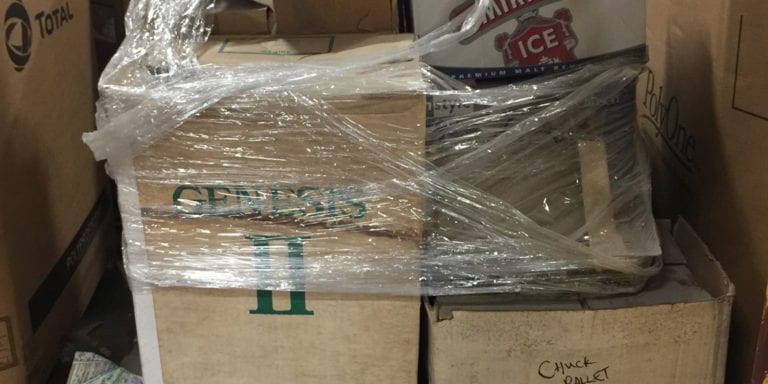
So, I got it into my head to get into one of those old dusty pallets here that have been put aside and moved and moved again and again and stored and ignored for years and years.
I’ve been trying to whittle away at these. They take up space and one can only procrastinate for so many decades before it becomes pathologic.
Many contain things I didn’t know what to do with years ago but have since got the confidence and mechanics to move on now. Others have things that I didn’t want to part with before but now I am willing to “punt” them away to the stores or specialist bookseller colleagues whom I’ve gotten to know and trust and can work with.
I felt like it would be a good mental and physical exercise plus I’d create one more pallet space (we call it a “footprint”) here in our 3 acre warehouse.
The first thing I noticed was a box of old books partially exposed. I pulled out the top one. The dust was so thick on it that I had to brush some of it off to read the title. ADENOIDS and Kindred Perils of School Life. I opened it and it was signed by the author. No big deal.
But cute and quirky and kind of funny! This might make a good blog story:
“The story of the dissection of a mystery biblio time capsule.”
I really hadn’t the vaguest idea what was in these boxes with the old filthy shrink-wrap holding them all together atop the rustic wooden slat pallet. It looked like just a random pile of odd boxes.
I decided to record images of things that came out of these boxes and see if I could make some kind of narrative from them.
Sitting at the very top was a styrofoam Robot helmet or face mask created years ago by Ernest—a top book evaluator here and quite a prankster.
He has christened many of the book carts and pallet jacks and hand trucks here with names reflecting their particular idiosyncrasies or “personalities” or his mood that day. The Lord of the Manor, Little Miss Stubborn, Bloody Mary, Princess Buttercup, Johnny Loudly, Loose Cannon… And Clif has named some of the pallet jacks after old girlfriends.
The next box was an old Genesis speaker box. In retrospect I should’ve recognized it as my own—from college and after—when, for many years, I was a devout audiophile.
I popped it open and saw it was full of junky old books. Before we came up with a market for old worn but evocative cloth books by forgotten or unsaleable authors, I would just put them aside. I didn’t have the heart to trash them. These would be easy now! I began pulling out one after the other and placing them on a cart to be rolled to our Books By the Foot department and offered to Interior Designers as “Vintage Cloth.” (“Vintage Cloth” are books 80-150 years old. “Upscale Vintage” are in very good or better condition. “Distressed Vintage Cloth” are books that show a lot of wear from handling and misuse. “Highly Distressed” means the books have been brutalized.) Still there’s a kind of beauty in their “distress” and the styles sell well to Designers and Movie and TV show prop masters who want that kind of look. Kind of a Ralph Lauren, classic, well worn vibe. Antiquey too.
These were mostly Distressed. I frequently look inside old books to see if they are first editions or may contain collectible ephemera. Like this, which I found a little later:
Who knew Frederick, our home, was a Sauerkraut Manufacturing hub.
Out of habit, I often flip open some old books. Sometimes I get an inkling—an urge to look in certain books. Often with good results—like autographs or other special things.
Sometimes I wonder if I’m a bit “divvie” (diviner).
“And maybe sometimes yer given a bit of divine assistance!”
Ah, she’s back. My book muse.
“And I want you to know how much it is all appreciated!” I replied hastily.
In one of the books there was a kind of familiar name: Talmadge…hmmm. I brought that book back off the cart and looked inside it. More closely this time.
“Georgia Maurine Talmadge 1904 San Marcos Texas”
That was my Grandmother! I went back and began looking in each old book. Names were written in many. The grandfather who died 27 years before I was born? Great uncle and great grandparents I’d only known by name and anecdote? Dad?
I was not elated. I was deflated. I know knew what these books were, and I was in no mood to dig up the past. I don’t deal with mortality very well. Here it was staring me in the face; well, I felt like I’d been smacked in the face. I knew I didn’t want to take them home. I couldn’t just sell them off. How many of these boxes contained this stuff?
Thus what I thought would have been an interesting but likely pretty easy exercise turned into an extremely difficult day long mind numbing stressful project.
I recalled that in 1975 my aged Texan grandmother (born in Hinsdale Illinois 1889) needed to be institutionalized. The old house her father had built himself by hand in San Marcos Texas in 1889 had to be sold —802 Belvin St.
My Dad and I flew down and met my uncle Tampy (George Taldmadge Roberts) and aunt Alice to be sure my grandmother, Boppa, was indeed not well enough to take care of herself in the old homestead any longer. This was difficult for all of them. They had been born in that house. Three siblings had died very young there. And there was a pecan farm and some other properties to deal with. Then there was all the stuff in the home and outbuildings to disperse. Things that had been in the family for well over a century and a half needed to be divided up from that beautiful old house.
We came up with a method of choosing pretty far along in the process. I urged Dad to choose the old books (go figure.) When it was all done, he ended up renting a big UHaul truck. I ended up driving it solo from the middle of Texas to the Washington DC suburbs. I had never driven a truck or a stick shift before. I was all of 19 years old. A true leap of faith and a crash course in navigating a 24 foot box truck cross country. (Fortunately—no crash.) Somehow I made the journey. Maybe there are guardian angels?
“Or perhaps a muse?”
“Hello again! Are you reading over my shoulder? Where you there way back then?”
“Could be. I’m not tellin.’ Now get on wi’ it.”
Anyway, I recognized many of these in front of me today were books that had been part of that epic journey. Others were from my childhood home in Amherst NY.
I was not happy to see these artifacts. Better to have left dormant tomes lie. But I had started so on I went.
The next box contained assorted things I’d put aside for the “future.” Things were tough to evaluate—was it 20 years ago? Or maybe I didn’t want to sell them at that time.
4 bound volumes early 19th century sheet music. Zachary Taylor’s Inauguration March? The Marseillaise?
Beautiful things.
Ummm… I’m still not quite sure what to do with those. I’ll have to look through each one and make sure there’s no Star Spangled Banner bound in…
Hello! I remember this. A 1840s doctor’s manuscript notebook of recipes and treatments. Laid in were half a dozen contemporaneous prescriptions.
Why there’s a cure for Cancer!
Ginger Beer!
Leafing through it…thank God for modern medicine!
There was no name or place written anywhere in there. I felt I could put a price on it now. A couple hours later I was to post it on the ABAA “Internal Trade” list that goes to members only. “$350 net ppd”
It sold in a few minutes.
Hmmmm…maybe I should have put something higher on it? Well, it’s out of the box and gone to a better place.
A little stash of 30-40 autographed sheets. They look like endpapers likely removed from badly damaged or already incomplete books. Arthur Godfrey? Would any remember? Or care? Hmmm…I’m not sure anyone would want these. I’ll just put them aside…
Here’s a file of early 19th century government pamphlets: “Concerning General Andrew Jackson’s Fine from the City of New Orleans.” What was all that about? Did he break something when he “fired once more and the British went a runnin'”?
And a December 1860 “Letter from the Secretary of the Interior” about the suppression of the slave trade! It has to do with unpaid bounties to those who captured slave ships off Cuba. Four months later, Fort Sumter was shelled.
And an 1840 sheet on the Smithson bequest. The beginning of the Smithsonian?! How cool.
You have to look at everything!
Here’s a bankers’ box fill with typed and manuscript papers of an American Cultural Attaché in Japan ~1948-1961. Photos. Speeches. Addresses. A file with photos of a huge collection of Hina dolls and a palace. Letters from the NYC Fifth Avenue Association about displaying it. A card from Sotheby’s stapled to it. Did he want to get it appraised for insurance purposes? Or did he sell it at auction after its public display?
Anyway, this could be something worth archiving in an institution that has a focus on Postwar Japanese reconstruction and US cultural relations. In 2018 I have couple ideas of specialists who knew these University folks and have their trust and could adequately evaluate and describe the box of papers. If they can place it I’d get half. Half is far better than 100% of nothing…
“So, off they go.
“To good ole Frisco.
“(And I hope he don’t send them back.)”
I pulled open the flap on a small dusty box. On top was a red “Daily Diary 1941.” Beneath that was a red “Daily Diary 1929.” “Tuesday January 1, 1929. Rained all day. Slept til 10:45 and had oysters for dinner. Fried. Sounds good and tasted good too….” Beneath that another and another…a bout twenty altogether. A score of some fellows years. I remember those coming in long, long ago. They weren’t something I could put out in the shop. So, I put them aside for the future. Well, the future is now. I have a friend in New Jersey now who can do something with these. Even if the diarist didn’t record remarkable events these books record a life. If it was a simple life—well, that is part of history too.
Then, three more boxes of old family books. Groan! There’s nothing I can do with them. None are to my tastes to put on my own shelves.
I put them on the cart and continued going through the other boxes on the pallet.
Some vintage model train parts? What’s a “Reefer”—in model train lingo.
Then it occurred to me. There is a “secret room” in this building. When we were first looking into acquiring it from the USPS we were given some blueprints. On these blueprints was an odd area we couldn’t find walking around. It was labeled “Inspector’s Office” and was accessed from the outside by a “Covert Entrance.” We were finally told it was the way the Postal Inspectors could enter the building with no one knowing it and go up about 15 steps to the enclosed catwalk or “Gallery” that wraps around the building’s interior about 10 feet up off the main floor. There are one way viewing windows every 15 feet or so. The Postal Inspectors could walk around almost the entire inside perimeter of this 3 acre building and snoop on workers. This is all hidden behind some walls on the warehouse floor. In this “covert” area the Inspectors were accommodated with a private office and bathroom. Pretty creepy, no?
We have no use for such things so we just “mothballed” all that area. We had stored some extra bookcases in there. I could shelve my ancestors’ books and stuff on those and they’d be preserved and also out of the way.
I rolled the cart over to the weird narrow—24″—door that is the only way in from inside the building. It has a two way mirror at eye level so they could look out and no one could look in.
I carried the books in an armload at a time and shelved them.
As I did I looked inside at the signatures and went back in time in direct ancestral line to the 1870s. I knew the story, but I hadn’t thought about it for a long time. My Great Grandfather George Henry Talmadge had been a Civil War soldier from Hinsdale Illinois. In 1887 he and his wife Lydia crossed the plains south in a covered wagon to San Marcos Texas with my Grandmother—Georgia—who was a baby at the time. He had skills as a carpenter and built the house at 802 Belvin St which is now designated a Historical Landmark by Texas and has an official plaque on it today.
The plaque reads: “George Henry Talmadge Home. A farmer from Illinois, George H. Talmadge (140-1911) served in the union army during the Civil War. In 1888 he moved to San Marcos with his wife Lydia (1851-1900) and their children, including an adopted daughter orphaned by the Chicago fire. Talmadge, who was also a carpenter, built this Victorian house of cypress wood in 1889. Active in church and community affairs, Talmadge family members occupied this home for 86 years.”
There indeed was a book inscribed by Lydia with her name and “Hinsdale Illinois” on the front endpaper. Another from the 1890s has her name and “San Marcos Texas” written in it. Then I found books with Georgia’s name written in under her maiden name and after her marriage to my Grandfather in 1908 as Georgia Talmadge Roberts.
The funny book about adenoids was not only signed by the author but it was inscribed to my Grandfather “Dr Joseph T Roberts—1902.” The textbooks are Sodeman’s PATHOLOGICAL PHYSIOLOGY. My dad contributed chapters to that.
A battered copy of Huckleberry Finn was to “Joseph T Roberts Jr. Merry Christmas 1919 love, Mother and Father.” My father, when he was ten years old. There was my Dad’s 1920s Master’s Thesis and his 1941 PhD from Tulane. He also got an MD there in the early 1930s. Then I opened a nursing textbook inscribed by “Mary Gertrude Goldston, Hillman Hospital Birmingham Alabama.” That was my mom.
I found a post card from 1951. It was of a Buffalo NY Doughnut shop. My brother Tony had mailed that to Grandma in Texas.
He would have been 9 then. It would be some years before I arrived on this planet. And there was a copy of Aesop’s Fables with color plates inscribed by another brother James Talmadge Roberts.
And there were a handful of Hardy Boy and Nature and Adventure books I’d written my name in as well.
The day went from depressing and burdensome to bittersweet—this little shrine to my family’s books.
But there was still a lot of pain for me handling all these books—most of which had crossed the country behind me in that truck.
I know there are more at home. Some are pretty nice books and photos and, letters, stuff… I still have a hoard of my own kids books somewhere boxed away—likely on another dusty old pallet here somewhere.
What else did I find on that pallet? Well, lots of stuff-some of it pretty cool – glass paperweights, some nice signed framed prints, other manuscript and printed material…but this has gone on far enough.
“Aye, it has.”
My muse…so patient…but there’s bit more to the Texas tale. The sad part I’ve been avoiding that weighs on me still.
“You don’t have to tell it. You can leave it be.”
“No. It is part of me. It is a big part of how I got from there to here and how all this book business came about.”
“I’m sorry. I was so sorry then too.”
“So you were THERE?!”
“You’ve always loved the J M Dent Everyman’s books. The first book you bought in Hay on Wye in the summer of ’74 when you rambled Europe alone was an Everyman classic. Geoffrey of Monmouth’s History of the Kings of Britain. You bought it from Richard Booth. On the endpapers of all the old ones there’s an image of a Muse. It reads: ‘I will go with thee, and be thy guide, In thy most need to go by thy side'”
“I…I think I understand.”
When I pulled the big UHaul truck into the driveway in Rockville, Maryland in June of 1975 after the 1500 mile journey from San Marcos, I felt as if I’d made a kind of rite of passage. It was a sort of nostos from another nostos. A homecoming from an older homecoming. It certainly felt epic to me. My Dad and I unloaded the stuff from the truck over a couple days and stuffed it into the already full home. The red velvet Victorian Fainting Couch (which actually folds out into a little bed) was sent to be reupholstered. Boxes were carried down to the basement.
My Mom was home and in ok shape. She’d had strokes in the last few years and had been in and out of nursing homes. She’d been sick almost my whole life. I was 7 when she and Dad flew down to New Orleans where his old friend and classmate, Michael Debakey removed her kidney and did some other advanced vascular surgery.
Over the next weeks, Dad talked about the old family house and his adventures growing up in San Marcos—becoming one of the first Eagle Scouts in Texas and going to college with LBJ at Southwest Texas State Teachers College. He told me tall tales—Texas tales—of Spanish gold and Rangers and armadillos and rattlesnakes and scorpions and jackalopes… Dad was not a tall Texan. 5’5″ and not happy about that. But the LBJ story was no tall tale. My older brothers got to tour the White House with him when he was Vice President. I got to meet him as a 9 year old on the tarmac when he landed in Buffalo. He was campaigning for President. Lady Bird and Bobby Kennedy were there too. LBJ was so tall. I kept looking up and up and up until I got to his face. Lady Bird was in a bright pink woolen suit. Her hair was so big. When she bent to shake my hand, she had a smile as broad as Texas, she said: “And HOW are Yewwww!”
I was always in awe of all My Dad had accomplished. He was even seriously considering going to law school at age 65.
One evening just about a month later he said goodnight and starting up stairs while I stayed to watch Johnny Carson or something. I heard him choking and rushed up to find him collapsed on the steps. He was dead in my arms of a massive coronary by the time the ambulance with its crew of trainees arrived. July 5th. It was 10 days before my 20th birthday.
I never got to say goodbye.
When they lowered him into the grave in Arlington National Cemetery (he was also a Bird Colonel in the Army, Retired), I wept unabashedly.
That was certainly a rite of passage. My life was suddenly full of responsibilities. And I now had to be responsible for myself. I was ill prepared and very immature.
My mother declined and I left school to care for her at home. She died Christmas a year and a half later. She had been hospitalized, again, for some days. I was called by a doctor who had done an emergency surgery on her in the middle of the night. I arrived Christmas morning to find her on a slab in the Water Reed morgue.
Merry Christmas.
I was at loose ends for a couple years thereafter. Adrift. Working where I could while trying to finish my undergrad degree—which I finally did in 1979.
Now what should I do?
I took another series of jobs and some graduate courses at GW. With encouragement from some professors I was going to go to enter grad school in the Fall of 1980.
I’d always haunted all the used bookstores in the DC region I could find. A favorite was Book Alcove in Gaithersburg Maryland. It was cheap and quirky.
On a whim while shopping there in June 1980 I asked the old proprietor if they hired summer help.
“Sure.”
Within a few weeks I decided this is what I wanted to do with my life. Friends and relatives scoffed. “That’s what retirees do—start a used bookstore.”
“Aahhh…”
I told the old man: “I want to open a store like this. If you would like to partner that would be great. If not I’ll do it on my own.”
Fortunately, Carl Sickles said he’d help—as a silent partner and advisor. And mentor and very much like a second father.
I opened Book Alcove of Frederick on September 21, 1980. Carl was quite happy and proud of me when I bought him out in 1983 and became Wonder Book. We remained good friends. He had a bad stroke in ’97 and then passed away in 2005.
So, in many ways the drive I’ve had to grow and rescue books has been in part an attempt to live up to my Dad. To do something he would be proud of.
And in many ways books rescued me. I feel I owe them.
It has also been and continues to be great and wonderful “game.” An endless jigsaw puzzle and strategy game trying keep building in all directions. Looking to fit pieces on one side and if that becomes a dead end moving to another part of the perimeter to expand the picture.
AND all the books…seems like all the books in the world sometimes. And I get to play with them—often 7 days a week.
What of that dirty old pallet that started this bittersweet tale? Well, here’s all that’s left:

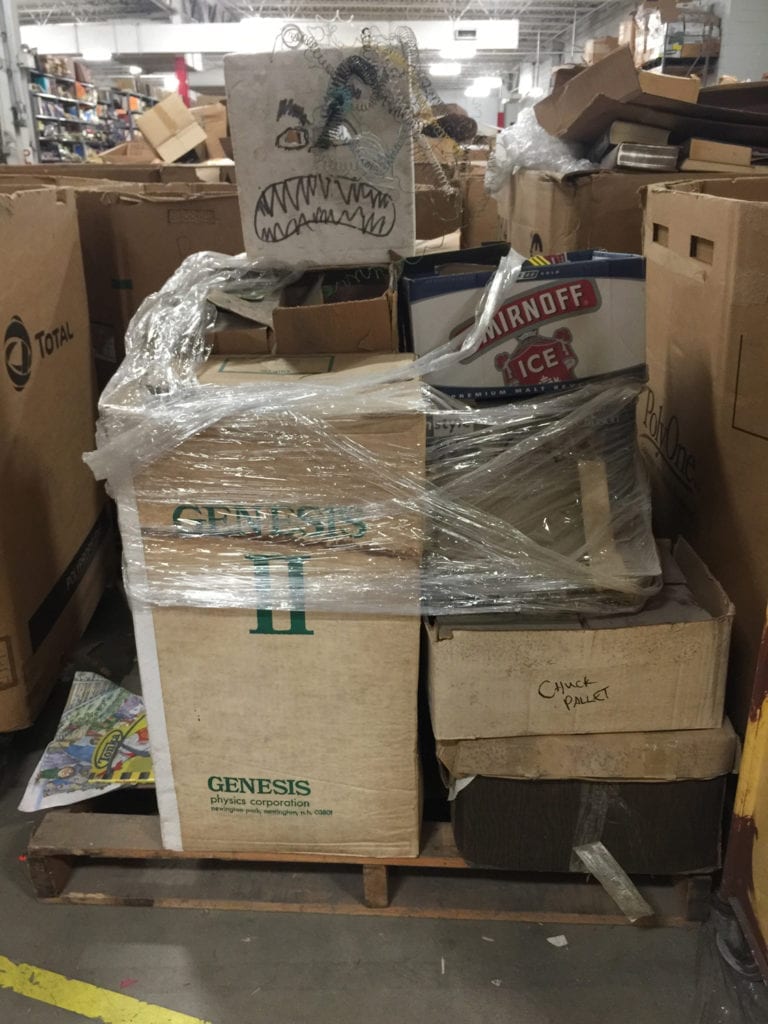
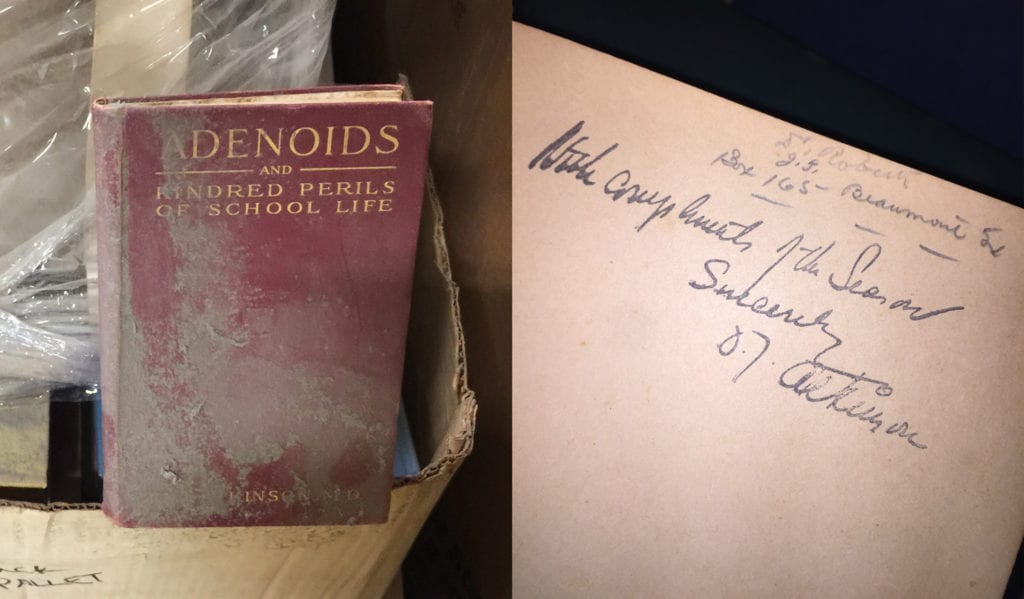
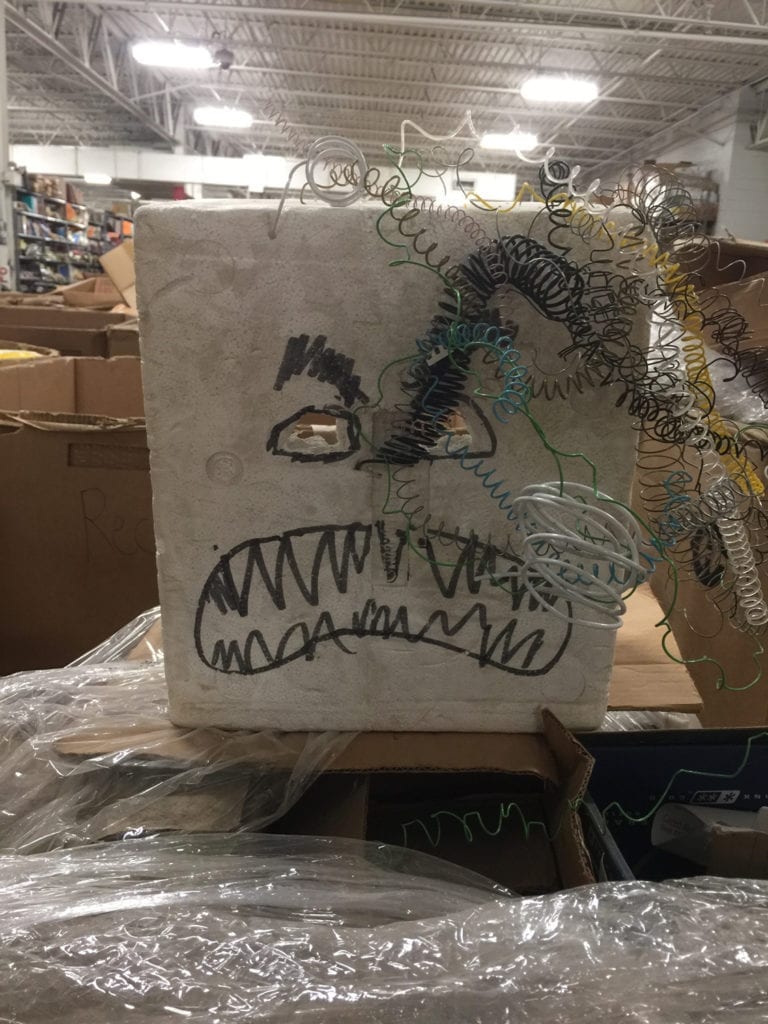
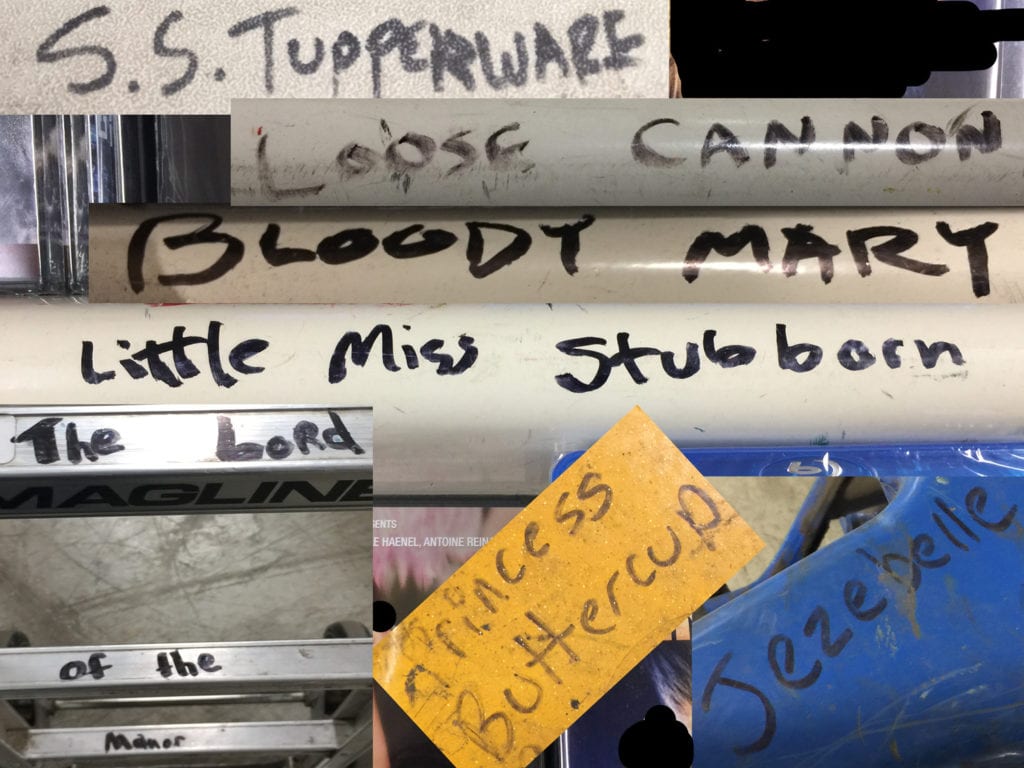

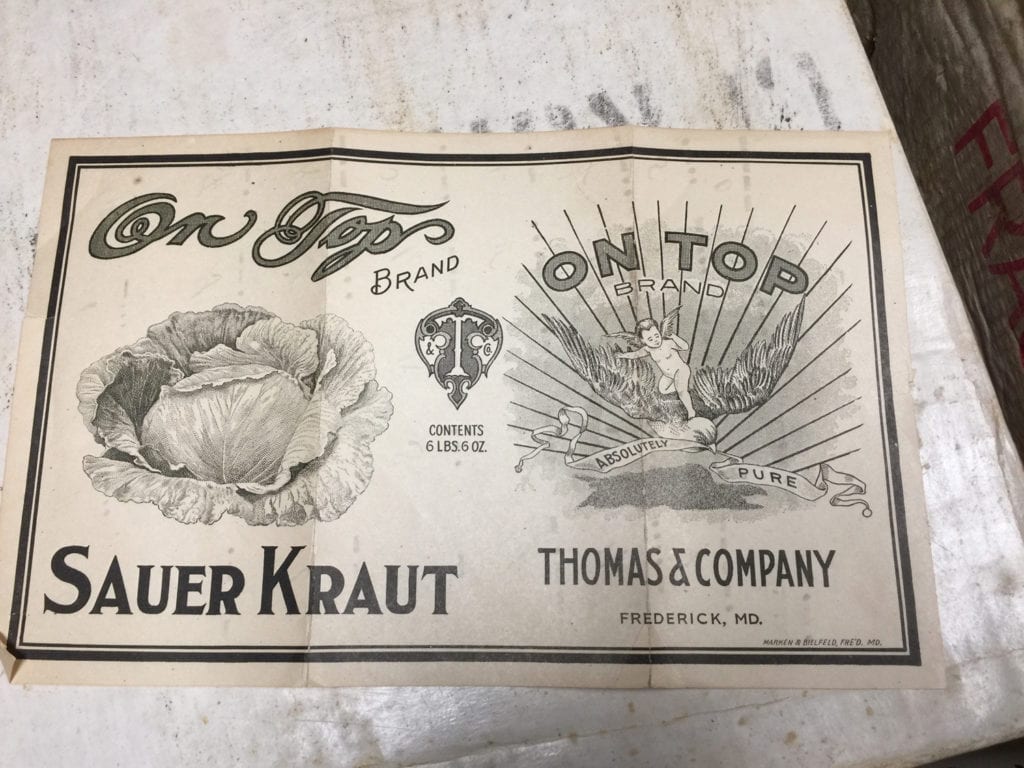

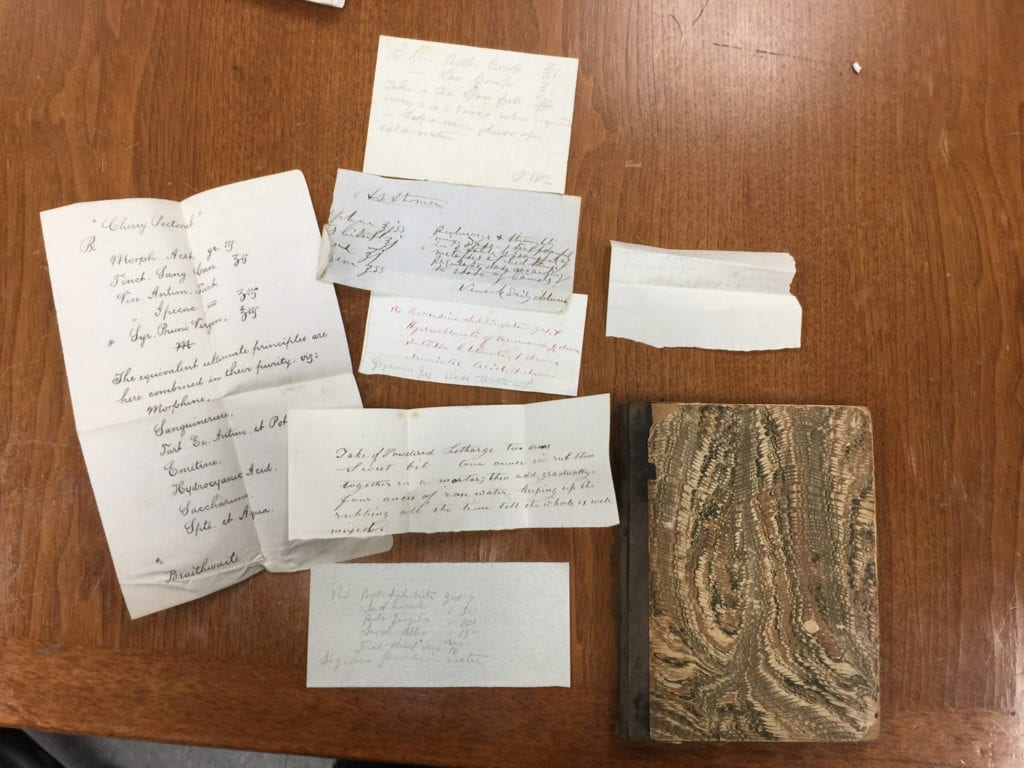
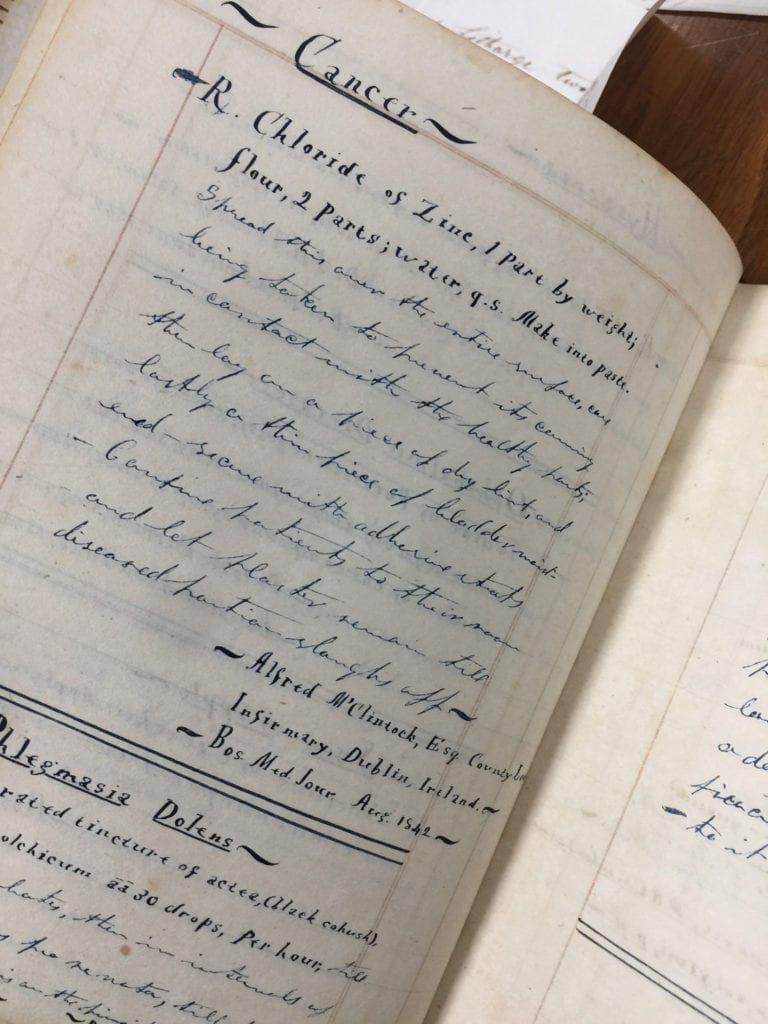
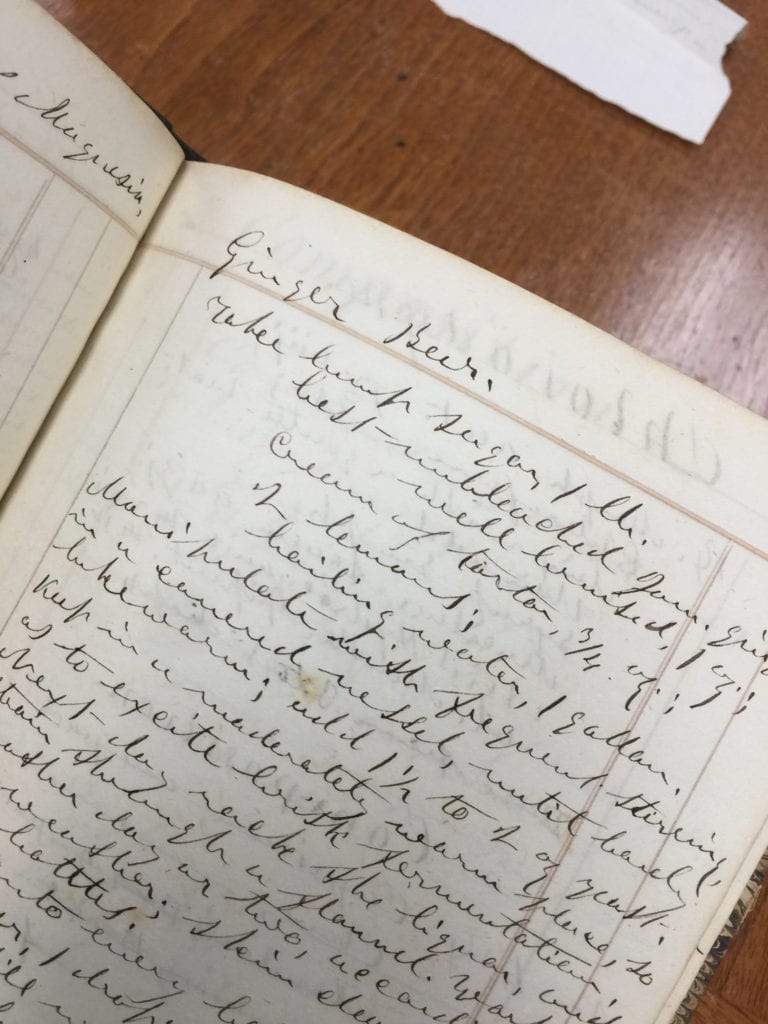



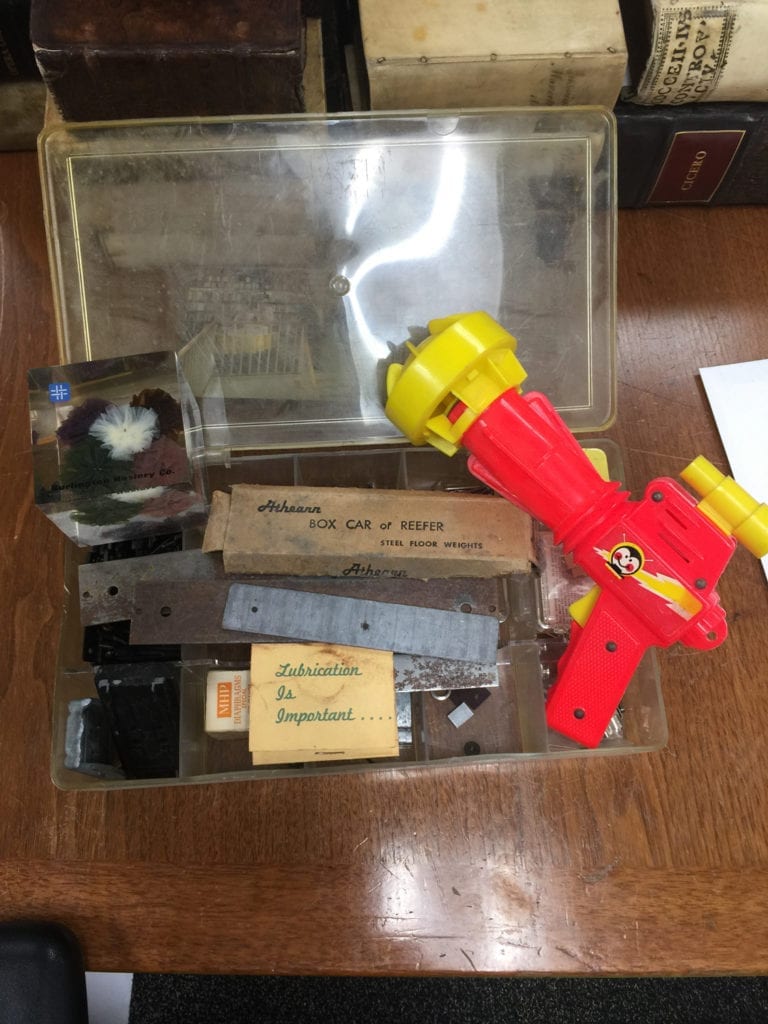
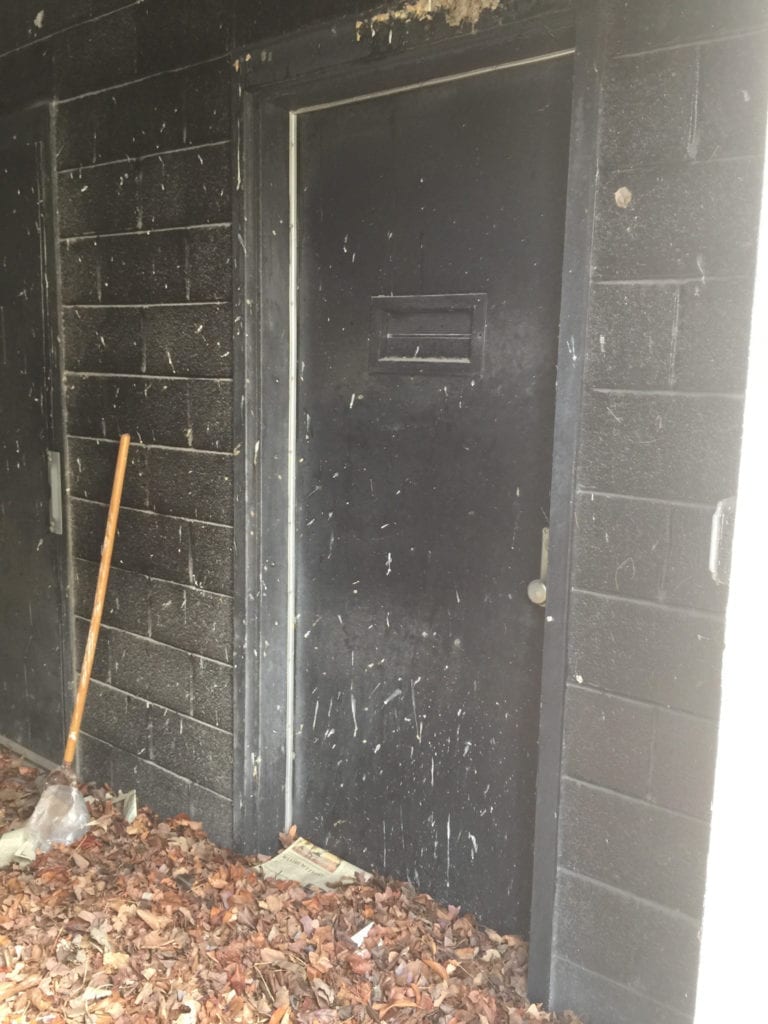
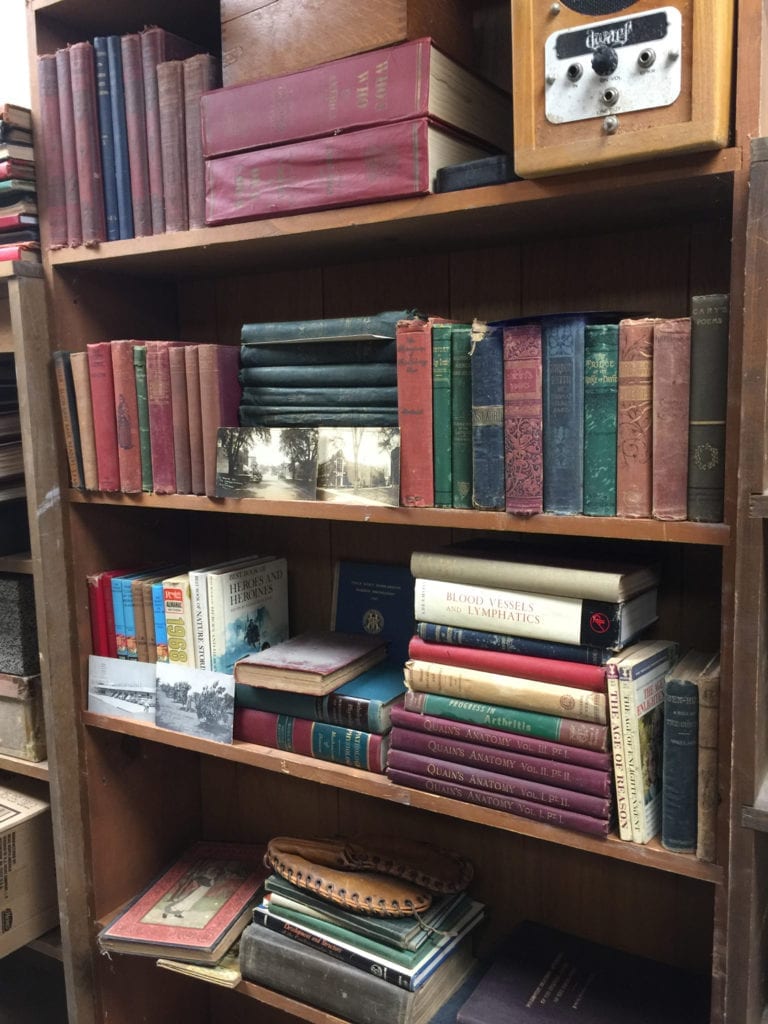

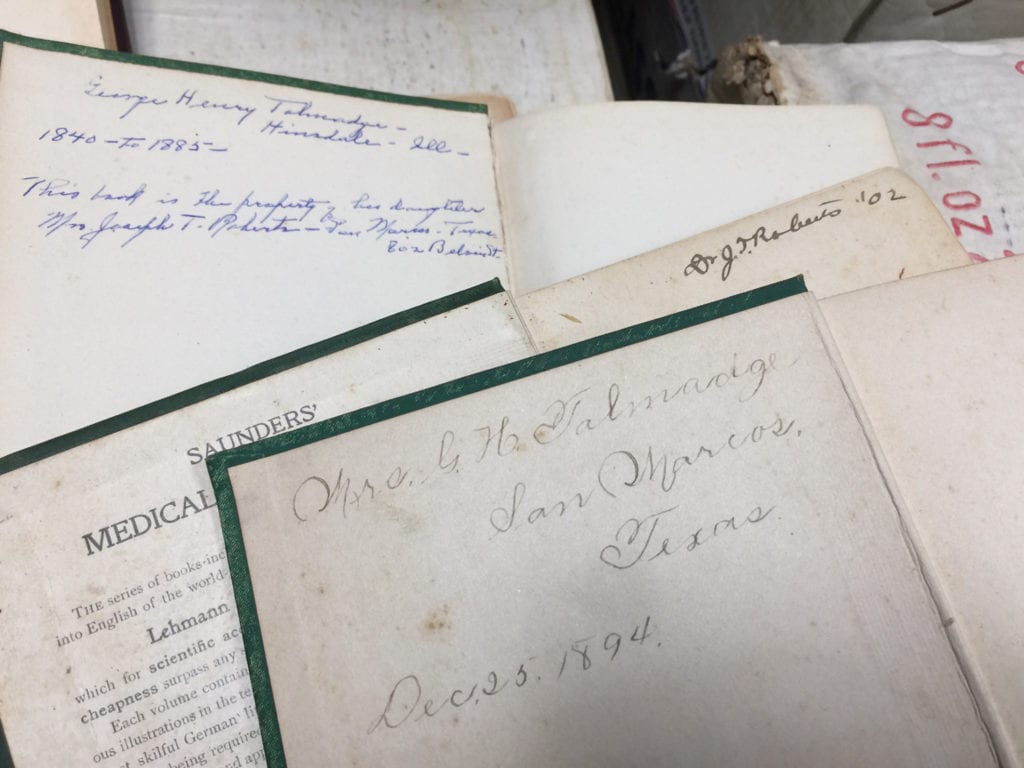
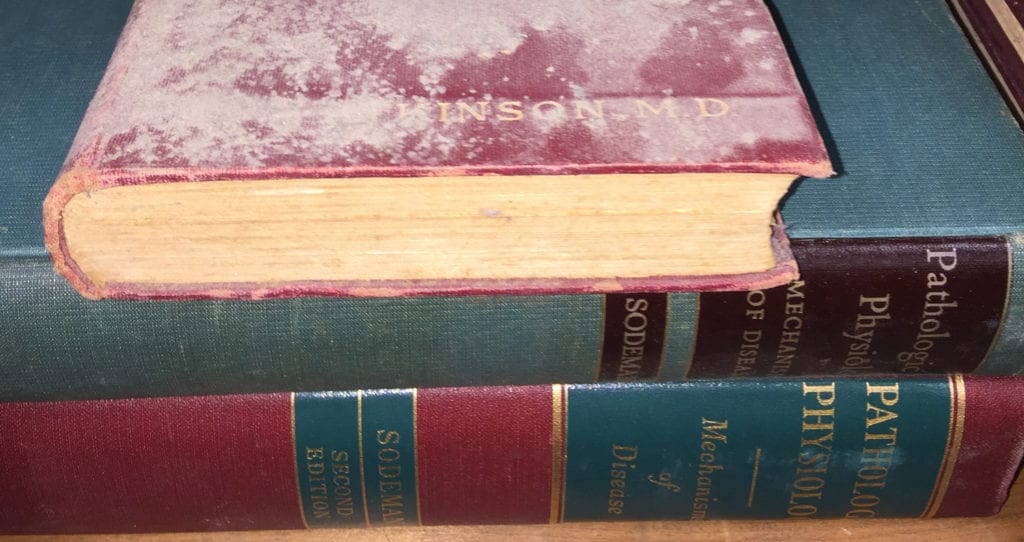

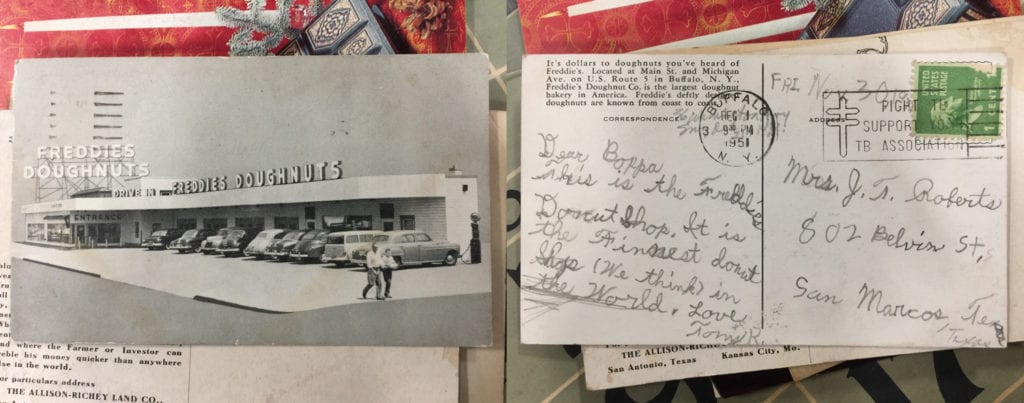

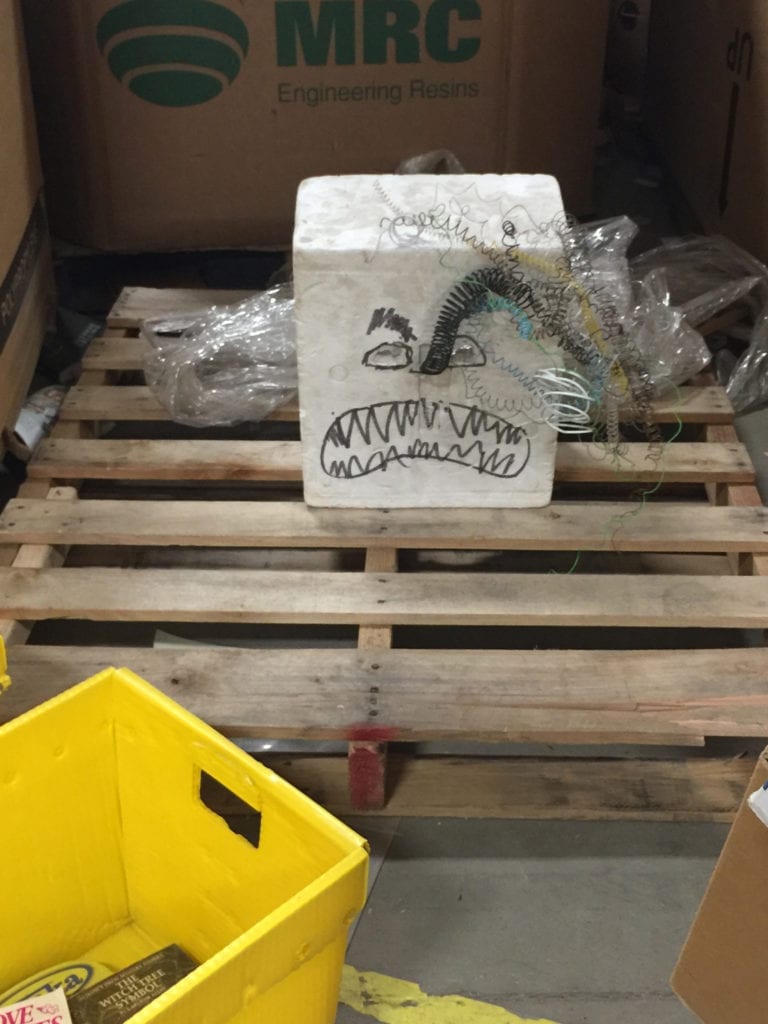
[…] went on to become a doctor as well. He had brought some of my grandfather’s tools from the old Texas homestead to the house where I grew up in Buffalo New York. The tools were frightening. Cold steel and heavy […]
Were they your families diaries written in 1941? Do you have them? Will you publish them? Did any historical societies keep anything? WHERE is everything now if this was written in 2018? Please update! Thanks for sharing.
Hi Deana
That does go back a couple years!
I have some shelves storing the family stuff
There is a little room here full of diaries and scrapbooks.
The red group is unfortunately very dull! Mostly “woke up” ‘Weather” “went to…”
Some day I’ll find a home for the manuscript material. It is very hard to quantify in many cases.
Thanks for reading and writing! Hope you look for more.
Chuck